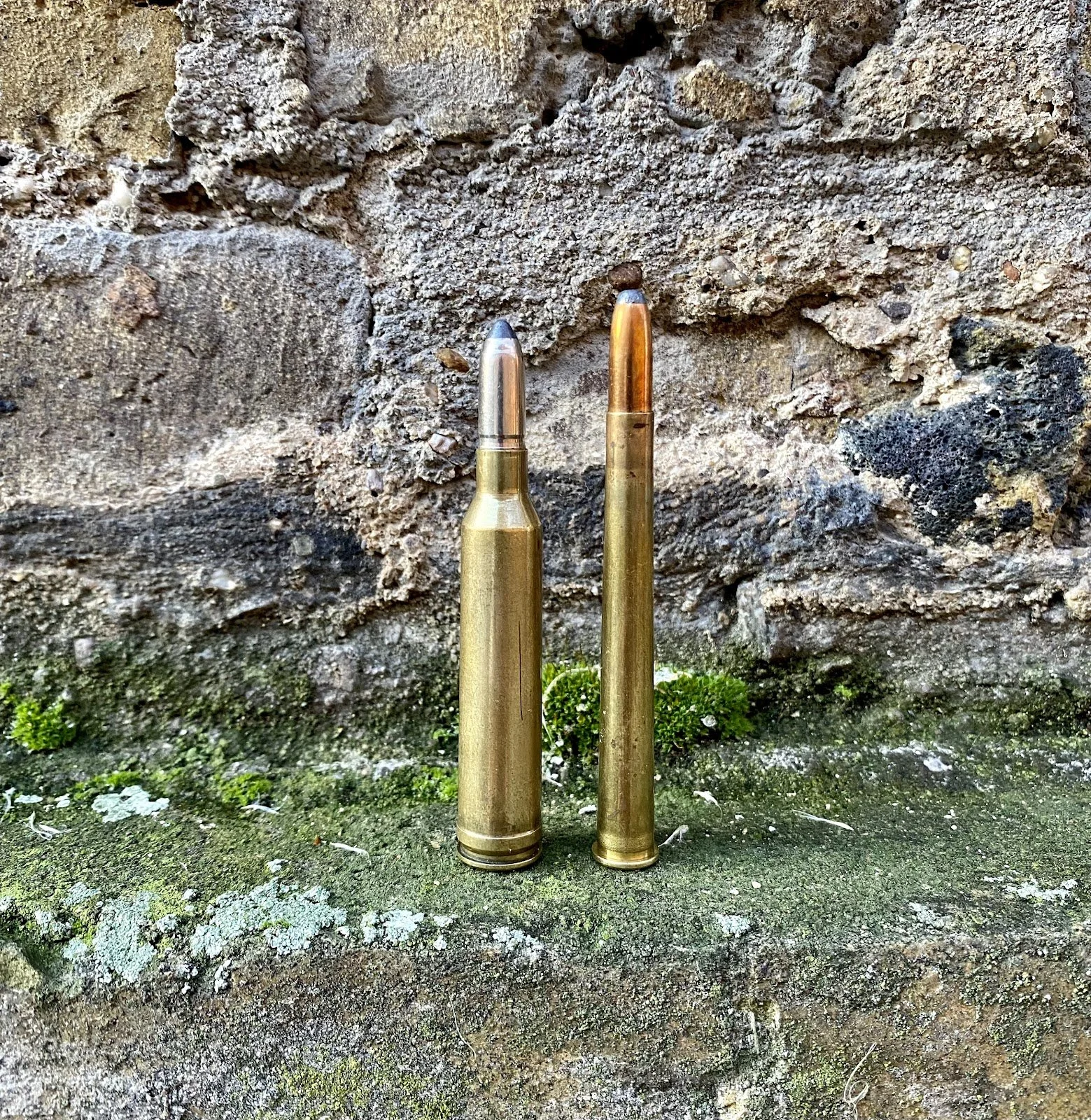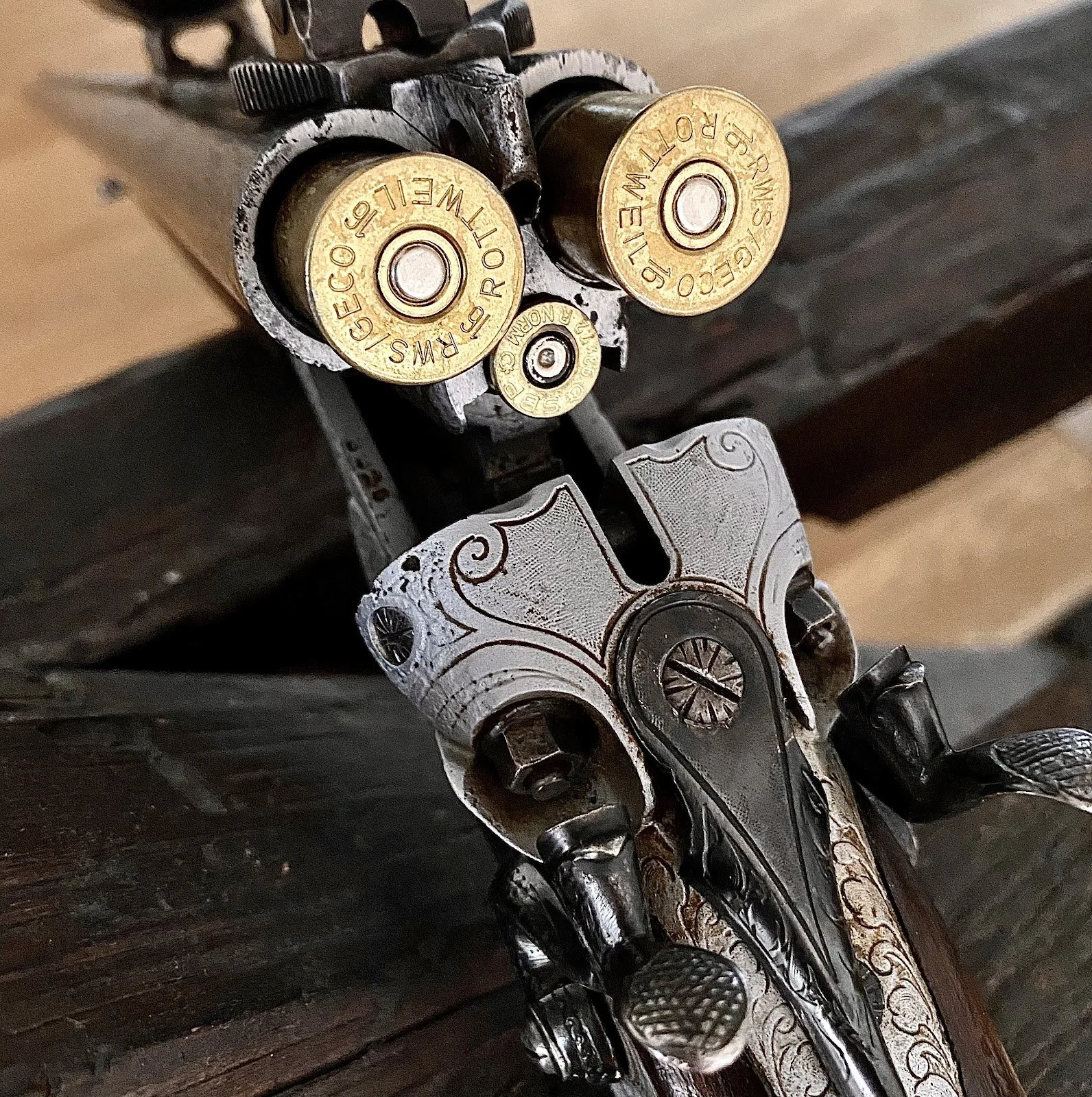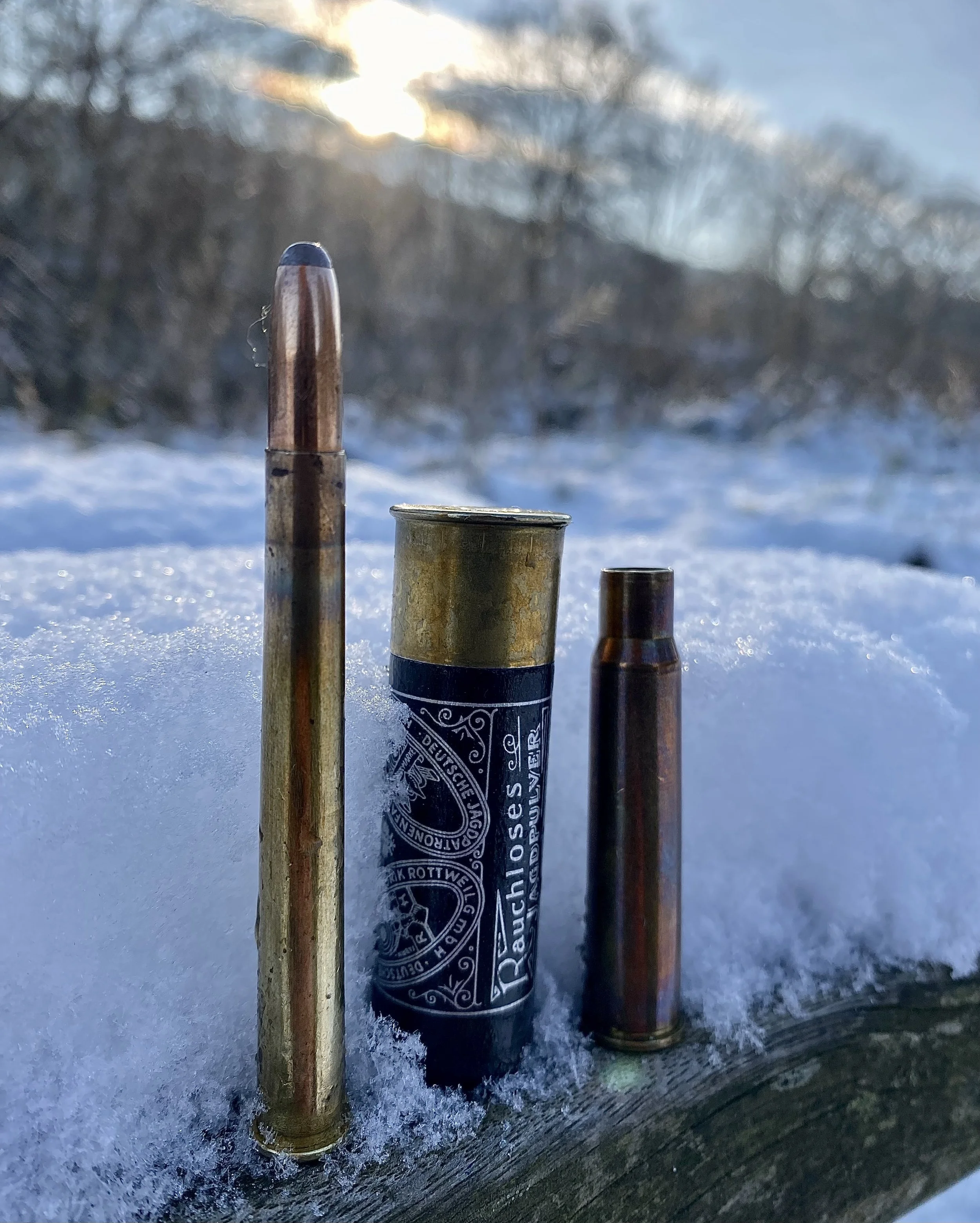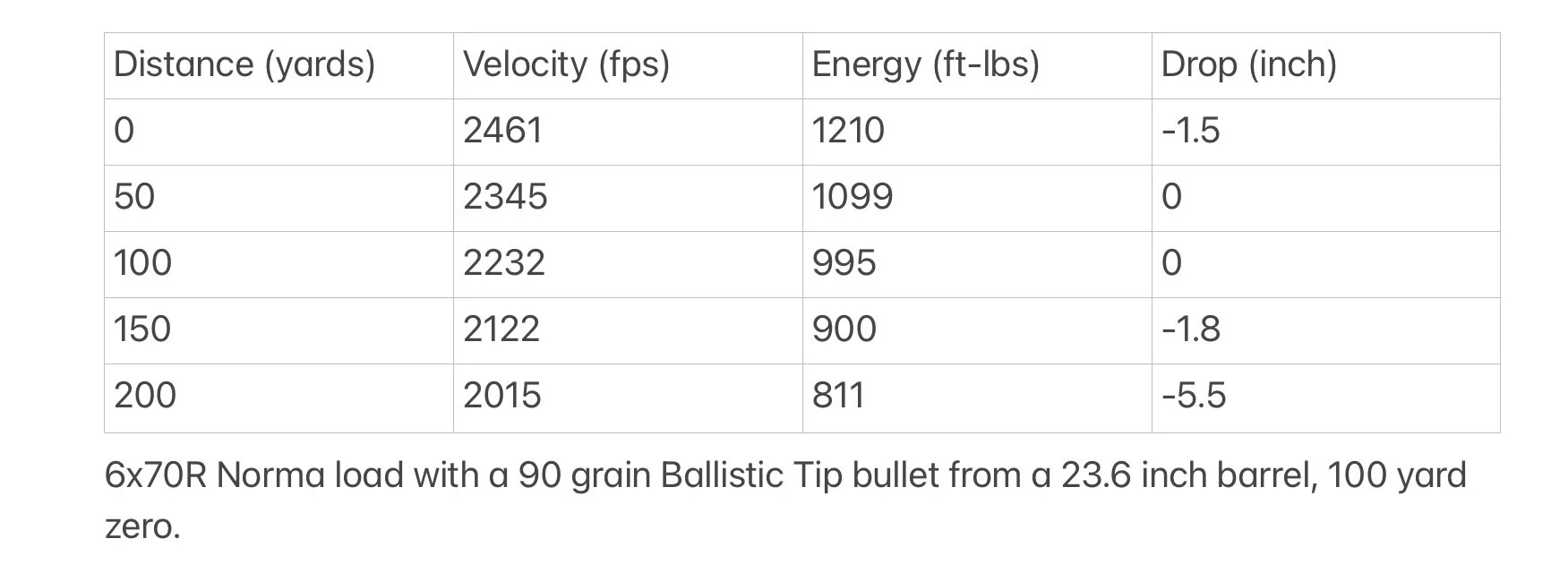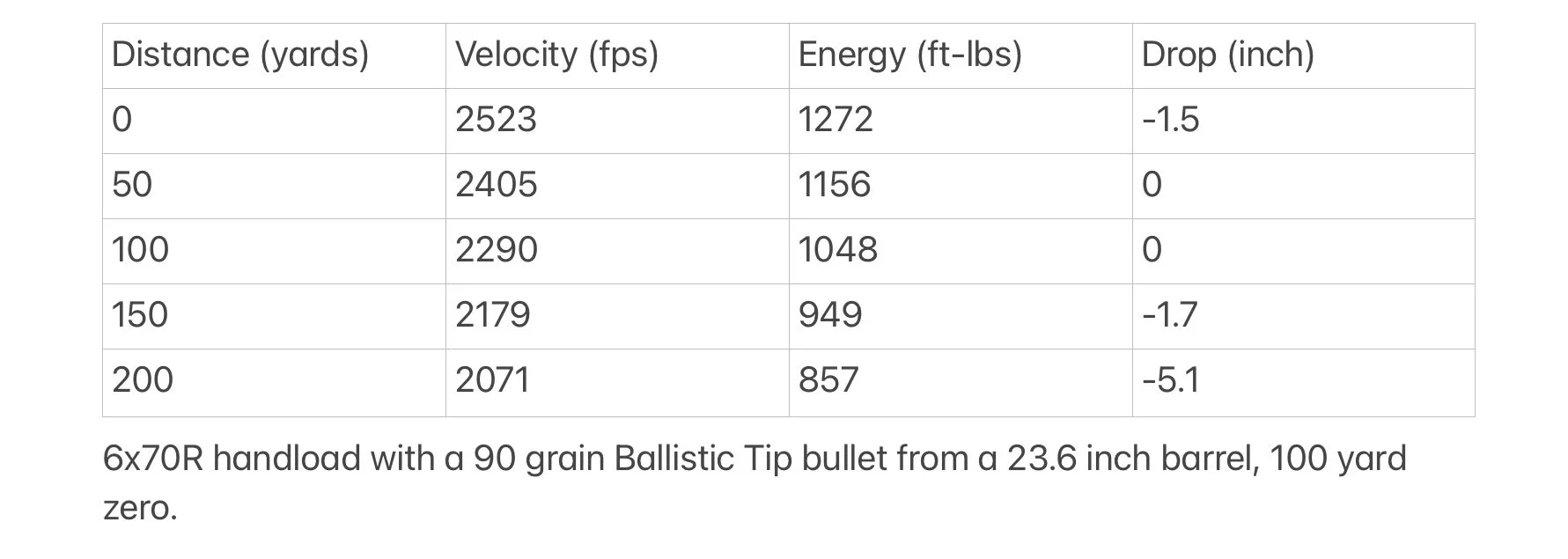6x70mmR: A 6mm Cartridge Like No Other
Historically, rifle cartridges that launch 6mm diameter bullets have not been particularly popular for a long time. Okay, the .243 Winchester from 1955 is a very popular chambering for deer rifles both in North America and Europe. But it’s the exception to the rule. No other .243/6mm cartridge is nearly as common as this necked down .308 cartridge from Winchester. Metric rounds of that diameter from Europe are practically non-existing. And American cartridges like the .244 Remington (also called the 6mm Remington) and the .240 Weatherby Magnum have nowhere near the following the .243 Win has.
This began to change in recent decades. Several modern shorter and fatter 6mm cartridges hit the market in the last twenty-something years. The .243 WSSM, the 6mm Creedmoor, the .24 Nosler and some AR-15 specific rounds like the 6mm ARC or the 6mm AR (a necked down 6.5 Grendel wildcat) broadened the selection.
All these cartridges have the advantage of mild recoil even with fast or heavy-for-caliber bullets. For deer sized animals, there is little reason for more power than the benchmark .243 Win has to offer. Even elk and moose have been taken cleanly time and time again with it. All of the mentioned cartridges aren’t ideal for that sort of hunting. But most will get big critters down with good bullets on selected shot angles.
What many of the .243 diameter rounds have in common is short overall length. That makes them perfectly suitable for handy, short-action rifles. Also most of the bunch have a relatively wide case. Reason for that is that quite a few 6mm cartridges are necked down versions of short rounds for bigger bores. The .243 is a necked down .308 Win, the .244 Remington is based on the .257 Roberts, which itself is a 7x57 Mauser descendant. The 6mm Creedmoor of course is a 6mm version of the 6.5 CM. Others were built with fat short cases from the onset, like the .24 Nosler or the AR-compatible choices.
The 6x70R has a unique case design for a 6mm cartridge. Here you can see it next to a 7mm Remington Magnum.
Contrary to all these cartridges, there is one .243/6mm with an entirely different set of characteristics. It looks nothing like the stubby, modern, high-efficiency cartridges. And it serves a very specialized purpose. It is rare even in its home range. The rimmed and pencil-like 6x70R cartridge was released in 2002 by German gun manufacturer Krieghoff. Krieghoff is renowned for producing high quality break action guns such as various drillings, double rifles and shotguns, but cartridges? Not so much.
Shotgun-rifle combination guns are versatile, all-purpose firearms for hunters who like to carry the same gun for all game. But most are offered with fairly large cartridge chamberings from 7mm through 9.3mm. A bit much for small game. So why not add a small caliber insert barrel into the shotgun tube? That’s exactly what the 6x70R was made for.
Most drillings (3-barrel guns) use either the 7x57R, the 7x65R, the 8x57IRS, or the 9.3x74R alongside two shotgun barrels. These are a bit heavy for the smallest native European deer. The diminutive roe deer is a fragile animal weighing around 35-45 pounds dressed, sometimes less. With the right bullet and shot placement to avoid the tougher bones, you can use quite large bullets without destroying precious venison. But smaller cartridges in the 5.6mm/.223 or 6mm/.243 ball park are a better fit. Those, on the other hand, might prove too little for wild boar or red deer/fallow deer. And oftentimes, 6.5mm is the legal minimum for the latter. Since hunters regularly hunt all of them simultaneously, there is a definite problem if you carry a bolt action rifle. It’s either too much for roe deer, or too little for a big stag. And I guarantee you, you’ll always stumble upon the one you’re not equipped for.
A drilling gun like this one is a perfect set up for insert barrels.
So a gun that fits all purposes is not a bad choice. Since shooting distances rarely exceed 200-250 yards in Europe, the better long range performance of bolt guns compared to combination guns is of less concern. Imagine leaving your house with a gun that will serve you well for furbearers, game birds, deer and even moose. Chances are, the tables won’t be empty that evening.
Of course it is possible to build insert barrels in a much more common rimless cartridge like the .243 Win. But break actions work best with rimmed cases. And while there are a few 5.6mm/.223 inch options, historically there’s been a blank space in the 6mm diameter bullet width. Also, safety concerns can’t be forgotten.
Let me explain that. If you look at the action of a drilling, it’s obvious that, while recoiling, the shotgun barrels don’t hit the back wall of the action in its center, which is the strongest part of the action. Insert barrels chambered for high pressure cartridges like the .243 Win lead to high torque forces on the breech. Older drillings are not strong enough to withstand repeated pressures higher than that of the intended shot shells. Not at that part of the breech. Even rimmed 5.6mm caliber rounds like the 5.6x50R Magnum exceed the safe duress levels of some guns.
And this is where a specialized insert barrel cartridge comes in handy. Krieghoff‘s special purpose cartridge operates at the low maximum pressure of 37,710 psi (2600 bar), which is lower than that of the .22 Hornet. This ensures safe function in even 12 gauge barrels (the larger diameter increases the distance to the center of the breech and thus the torque forces), and in old guns as well.
Krieghoff‘s (and other manufacturer’s) modern drilling guns are built strong enough to work reliably and safely with highest pressures. But many times hunters carry a gun a lot older than they are themselves. So they’re not left behind with this roe deer specific cartridge.
The parent case of this skinny 6x70R was another almost unknown and pencil-like looking old cartridge, the 6.5x70R. That case was necked down, primers were adapted, and powders were selected to fit the 6mm version. The low-pressure 6x70R is a perfect cartridge for taking roe deer without excessive meat loss. Muzzle velocities below 2,500 fps reduce potential for meat destruction, yet the .243 inch diameter bullets carry and retain enough energy to convince roe deer to give up breathing at any sane distance. The small kill zone of these animals forbids shots at distances much further than 150, maybe 200 yards. At least in my opinion. Bullet drop from the 6x70R is not too bad, then.
Accuracy wise, combination guns are said to carry a few inherent disadvantages. Different temperatures of the barrels after firing one out of the bundle complicate things. When you let your gun cool down properly after shots, five shot groups of under an inch are as manageable with these guns as with bolt guns or single shots. If you tailor your loads to fit your gun, this is even more true. And everyone who’s concerned about shots wandering with increasing temperature, let me tell you that 2-3 quick shots are fine. Do you really need more to bring down small game animals if you know how to place a bullet out to the mentioned distances? I doubt it.
The 6x70R next to a 16 gauge shot shell and a fired 8mm Mauser.
Now let’s take a look at the dimensions of the 6x70R. The case measures 2.756 inches. While tapered, it has no shoulder. It headspaces from its rim. The pencil-like silhouette helps keep pressures low, which seemed more important than building the most efficient case. The bullet sports the typical .243 inch diameter (6.17mm) of this class of cartridges. Some variations of the diameter exist, but by using the most common, the engineers at Krieghoff ensured that handloaders can use a wide array of bullets.
Speaking of handloading, if you are interested in using the 6x70R, you’d better be stuffing your own. When I last checked, no manufacturer offered factory loads. Norma used to sell a load with a 90 grain Ballistic Tip, but today you have to take a look at a reloading manual or a comparable website and start working up your own loads.
To give you an idea of the cartridge’s ballistics, let’s look at Norma’s old load. The 90 grain Nosler Ballistic Tip bullet with a BC of .365 left 23.6 inch long barrels at roughly 2,461 fps. This might not sound like much, but if you recall the intended use, it’s more than enough. The following table shows the ballistics out to 200 yards. If you want to aim at a 5-inch diameter kill zone at longer distances, I recommend lots of range practice. A 200-yard shot at a body measuring 8-10 inch from back to brisket is as difficult as a 400 yard shot at a bull elk. I know there are many shooters claiming to be able to hit targets smaller than that at even longer ranges, but I fear the number who claim to be that accurate is larger than the number who are that accurate. Cold barrel, first shot, 10 out of 10 times? Not easy. I advocate for shots as close as possible, no matter the animal. Anyway, here are the ballistic numbers of the Norma load.
The .243 Winchester plays in an entirely different league, speed and energy wise. Federal loads a 90 grain Accubond bullet with an advertised speed of 2,999 fps. There’s no need to look at the precise numbers for drop, energy and speed at various ranges to see that the .243 Win will better the 6x70R in every category. But, as I mentioned before, the 65,000 psi of Winchester‘s 6mm cartridge forbids its use in some older drilling guns.
To see what a tailored 6x70R handload will do for you, look at the following table. It shows velocity, energy and drop of a load with the same 90 grain Ballistic Tip, but with a 2,523 fps muzzle velocity.
As you can see, the 6x70R resides on the lower end of the scale of 6mm cartridges. It won’t be the next best thing in the shooting world. Most shooters won’t take the time necessary to appreciate it and the concept of insert barrels. In the age of bolt actions and extreme long range hunting, a moderate power cartridge for a niche application has a tough time gaining traction. But I hope this won’t mean the 6x70R will disappear.
Insert barrels, usually full length tubes, are sold by Keller + Simmann Präzisions-Einsteckläufe, a specialized company for such barrels in Germany. The 6x70R is by far not the only option, many other rimmed cartridges can be shot from 20/16/12 gauge shot barrels with the help of an adapter tube. But none of them was tailored to the idea of insertion barrels quite like the 6x70R.
Roe deer hunting in Europe with combination guns is the main field of use. In Africa, small antelope such as steenbuck, duiker, dik-dik, klipspringer or vaal rhebok plus predators such as lynx, jackal, honey badger, and genet cat also won’t like the 6x70R. North America’s pronghorn, Coues deer, bobcats and coyotes seem like suitable prey. Even treed cougars won’t like the bite of a 6x70R. A trapper or subsistence hunter might find a drilling loaded with shot, a medium bore cartridge, plus the 6x70R intriguing.
Prepared for everything with this combination.
Ultimately, insert barrels and the 6x70R alike were, are, and will be a niche combination. That said, they fill out the niche in a fantastic way. If you are one of those who hunt and stalk around in this spot, you’ll probably find appreciation for Krieghoff‘s development.


